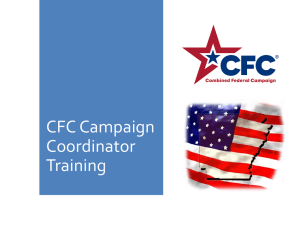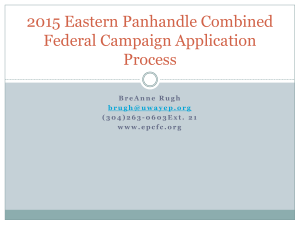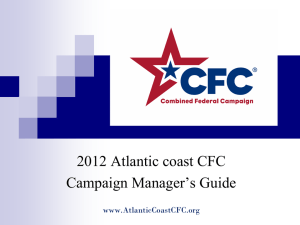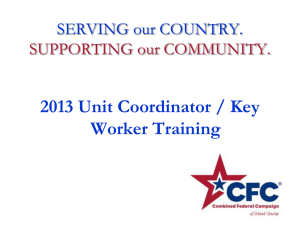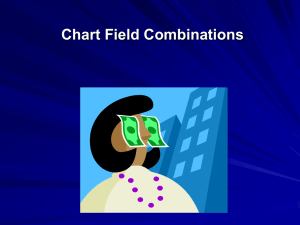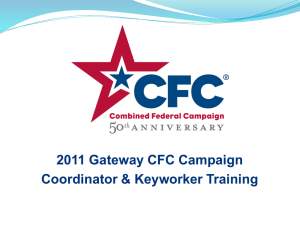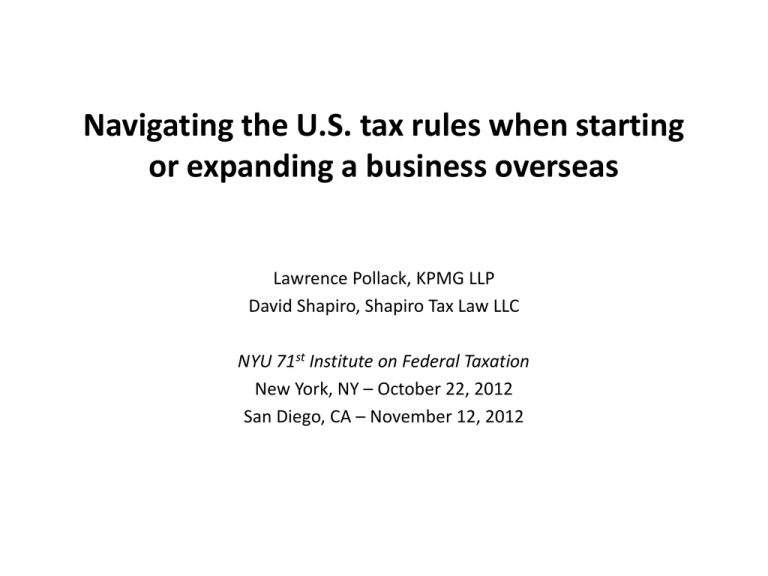
Navigating the U.S. tax rules when starting
or expanding a business overseas
Lawrence Pollack, KPMG LLP
David Shapiro, Shapiro Tax Law LLC
NYU 71st Institute on Federal Taxation
New York, NY – October 22, 2012
San Diego, CA – November 12, 2012
Disclaimer
ANY TAX ADVICE IN THIS COMMUNICATION IS NOT INTENDED OR WRITTEN TO BE USED, AND
CANNOT BE USED, BY ANY PERSON OR ENTITY FOR THE PURPOSE OF (i) AVOIDING PENALTIES
THAT MAY BE IMPOSED ON ANY TAXPAYER OR (ii) PROMOTING, MARKETING OR
RECOMMENDING TO ANOTHER PARTY ANY MATTERS ADDRESSED HEREIN.
You (and your employees, representatives, or agents) may disclose to any and all persons,
without limitation, the tax treatment or tax structure, or both, of any transaction described in the
associated materials we provide to you, including, but not limited to, any tax opinions,
memoranda, or other tax analyses contained in those materials.
The information contained herein is of a general nature and based on authorities that are subject
to change. Applicability of the information to specific situations should be determined through
consultation with your tax adviser.
©2012 KPMG LLP, a Delaware limited liability partnership and the U.S. member firm of the KPMG
network of independent member firms affiliated with KPMG International Cooperative ("KPMG
International"), a Swiss entity, and Shapiro Tax Law LLC, a Pennsylvania limited liability company.
All rights reserved.
2
Agenda
•
•
•
Branch versus subsidiary
Later conversion of foreign branch into foreign subsidiary
Maintaining U.S. tax deferral by navigating the anti-deferral regimes
– Subpart F
– Investment in U.S. property
– Passive foreign investment company
3
Branch operations
•
•
•
True foreign branch versus “check the box” hybrid branch
U.S. tax benefits of operating as a foreign branch
– Often considered when local operations would not cause a taxable presence in
foreign jurisdiction
– Start-up losses currently deductible in the U.S., subject to the dual
consolidated loss rules
– Some foreign countries do not impose a branch remittance tax, but do impose
a dividend withholding tax on profit repatriation
U.S. tax disadvantages of operating as a foreign branch
– Profits currently taxable in the U.S.
– Foreign tax credit limitations may be more difficult to manage with branch
rather than subsidiary form
4
Incorporation of foreign branch – Potential
loss recapture
•
•
U.S. tax loss recapture provisions to evaluate
– Branch loss recapture. IRC §367(a)(3)(C)
– Dual consolidated loss recapture. IRC §1503(d)
– Overall foreign loss recapture. IRC §904(f)
Incorporation when foreign branch achieves “cumulative” break even point can
avoid loss recapture
5
Deferring U.S. tax on foreign subsidiary earnings –
Avoiding direct and indirect U.S. taxation
•
•
•
•
Avoiding U.S. effectively connected income and U.S. permanent establishment
Subpart F
– Foreign Personal Holding Company Income
– Foreign Base Company Sales Income
– Foreign Base Company Services Income
– Other
Investment in U.S. property
Passive foreign investment company
6
Overview – Subpart F exception to deferral
•
•
Certain income of a controlled foreign corporation (CFC) is currently includible in
the income of its U.S. shareholders in the year earned
– Inclusion creates increased tax basis in the CFC shares under IRC §961(a)
– Amounts distributed by the CFC in current and subsequent taxable years
treated first as "previously taxed income" under §959, and reduce U.S.
shareholder's U.S. tax basis in the CFC shares under §961(b)
Earnings of a CFC invested in "U.S. property" under sec. 956 treated as currently
distributed to its U.S. shareholders per sec. 959
IRC Sec. 951(a)(1)
7
Subpart F – Statutory provision
IRC §951(a)(1) provides that if:
•
•
•
•
•
•
a foreign corporation is a controlled foreign corporation ("CFC") for an
uninterrupted period of 30 days or more during any taxable year
every person who is a "U.S. shareholder" (as defined in §951(b)) of such
corporation and who owns, within the meaning of §958(a), stock in such
corporation
on the last day (in such taxable year) on which the corporation is a CFC
shall include in his gross income his pro rata share
of the corporation's subpart F income for the year
and the amount of Investment in U.S. property as determined under section 956
8
"Hopscotch" rule for subpart F inclusion
U.S.
Inclusion
CFC-1
CFC-2
Subpart F income
9
Definition of "U.S. Shareholder"
10% of voting power of FC stock (owned directly, indirectly, or constructively)
Value of stock is irrelevant
U.S.
9% voting stock
100% nonvoting
preferred stock
FC
IRC Sec. 951(b), 958, 318
10
Definition of controlled foreign corporation (“CFC”)
•
•
•
•
A foreign corporation is a CFC if more than 50 percent of the total combined voting
power or total value of the stock of such corporation is owned (directly, indirectly,
or constructively) by U.S. shareholders on any day during the tax year of such
corporation.
Attribution FROM entities:
– From partnerships and estates (and, generally, trusts): proportionately to
partners and beneficiaries
– From corporations: proportionately to 10% or greater shareholders
– Special rule – If an entity owns > 50% voting power in another corporation, it
is treated as owning 100% of such entity, solely for purpose of the "attribution
from entity" rule.
Attribution TO entities
Family attribution
IRC Sec. 957(a), 958, 318, Regs. 1.957-1
11
Example: Special 50% Rule Attribution from Entities
•
Is Foreign Corporation a CFC?
– U.S. partner "indirectly" owns 36%
voting power of FC (60% of 60%).
– However, since foreign partnership
owns more than 50% voting power
in FC, it is treated as owning 100%
solely for purposes of applying
attribution from entity rule. As
such, U.S. partner treated as
"constructively" owning 60% of
100% of FC, thus causing FC to be
a CFC under special rule.
– The subpart F inclusion is based on
36% indirect ownership.
U.S.
Partner
60% Voting Power
Foreign
Partnership
60% Voting Power
Foreign
Corporation
IRC Sec. 958(b)(2)
12
U.S. partnership "blocker”: Notice 2010-41
•
•
•
Treasury and IRS intend to issue regulations that would classify certain domestic
partnerships as foreign partnerships solely for purposes of identifying the U.S.
shareholders of a CFC that are required to include subpart F (and section 956)
income
Intended to prevent use of a U.S. partnership with foreign corporate partners, and
with ultimate U.S. ownership to hold shares of a CFC with a view towards avoiding
subpart F inclusion
IRS stated this structure is "manifestly incompatible with the intent of §951".
13
Notice 2010-41: Partnership blocker
U.S.
100%
100%
CFC-1
CFC-2
50%
50%
U.S.
Ptp
100%
CFC-3
U.S. partnership would be treated as a
foreign partnership for purposes of
determining the U.S. shareholder that has a
subpart F inclusion where:
•
•
The partnership is a U.S. shareholder of a
foreign corporation that is a CFC, and
If the partnership were treated as foreign,
– that foreign corporation would continue
to be a CFC, and
– at least one U.S. shareholder of the CFC
• would be treated under §958(a) as
indirectly owning stock of the CFC
owned by the partnership that is
indirectly owned by a foreign
corporation, and
• would be required to include an
amount in gross income under
§951(a) with respect to the CFC
14
Subpart F Income
•
•
•
•
•
Insurance income
Foreign base company income
International boycott factor
Bribes, kickbacks, or illegal payments to government officials
Income from certain blacklisted countries designated in accordance with IRC
§901(j)
IRC Sec. 952(a); 75 F.R. 44842, 7/29/10; Rev. Rul. 2005-3.
15
Exclusions and Limitations
•
•
•
•
Effectively connected income
Current earnings and profits limitation
Qualified deficits
Recharacterization in later years under IRC Sec. 952(c)(2)
IRC Sec. 952(b), (c).
16
Foreign Base Company Income (“FBCI”)
•
•
•
•
Foreign personal holding company income
Foreign base company sales income
Foreign base company services income
Oil related income
IRC Sec. 954(a).
17
Special Rules and Exceptions to Foreign Base
Company Income
•
•
•
Full inclusion rule
– All income treated as foreign base company income or insurance income if
FBCI and insurance income exceed 70% of the CFC's total gross income
De minimis rule
– No income treated as FBCI if sum of FBCI and insurance income is less than
lesser of:
• 5% of the CFC’s gross income, or
• $1 million
High tax exception
– CFC’s foreign base company income taxed at a rate greater than 90% of
maximum U.S. rate (currently 31.5%), determined using U.S. tax principles
IRC Sec. 954(b)(3)(B), (b)(3)(A) and (b)(4).
18
Foreign Personal Holding Company Income (“FPHCI”)
•
•
•
•
•
Dividends, interest, royalties, rents, and annuities
– Exclusion for "PTI" dividends
Excess of gains over losses from disposition of property that produces FPHCI
– Capital gains from disposition of stock, bond, patent
– May avoid by "check and sell" transaction
Excess of gains over losses from certain commodities transactions
Excess of foreign currency gains over losses from Sec. 988 transactions
Others (i.e., income equivalent to interest)
IRC Sec. 954(c), 959(b).
19
FPHCI – Dividends
Exclusion for same country dividends
Year Two (internal reorganization)
Year One
U.S.
U.S.
NEWCO – Y
Dividends
Y
X
Y
X
Same country exclusion only applies if earnings are
attributable to recipient's holding period in payor's stock
IRC Sec. 954(c)(3).
20
FPHCI – Gains from Property Transactions
•
•
Property transactions – FPHCI includes net gains from sale or exchange of:
– Property that gives rise to FPHCI
– An interest in a trust, partnership or REMIC
• Exception for sale by CFC of 25% or greater interest in partnership (lookthrough treatment)
– Property that does not give rise to any income (e.g., gold, options)
FPHCI does not include gains and losses from the sale or exchange of inventorytype property or assets used in business operations, including sale of goodwill or
going concern value.
IRC Sec. 954(c)(1)(B), 954(c)(4).
21
2005 Tax Act – Temporary "CFC look-through"
exception to FPHCI
•
The 2005 Act provides a temporary "CFC look-through" exception from subpart F
FPHCI for dividends, interest, rents, and royalties received by a CFC from another
CFC that is a related person within the meaning of §954(d)(3)
– A "related" CFC is a CFC that controls or is controlled by the other CFC, or a
CFC that is controlled by the same person or persons that control the other
CFC
– Ownership of more than 50% of the CFC's stock (by vote or value) constitutes
control
Notice 2007-9.
22
2005 Tax Act – Temporary "CFC look-through"
exception to FPHCI – cont.
•
•
•
To the extent such items (of dividends, interest, rents, or royalty) are attributable
or properly allocable to income of the related CFC that is not subpart F income,
they are not treated as FPHCI to the recipient CFC
Effective for tax years of CFCs beginning after December 31, 2005 and before
January 1, 2012 (as extended by the Unemployment Insurance Reauthorization
and Job Creation Act of 2010)
Most recent proposal to extend the look-through provision for two years has been
approved by the Senate Finance Committee and will be considered in the fall of
2012.
Notice 2007-9.
23
FPHCI planning to avoid subpart F through use of
“foreign reverse hybrid entity"
•
Exclusion for same country interest
U.S.
Parent
Equity
Loan
Country X Opco
IRC Sec. 954(c)(3)(A)(i).
Country X
Partnership
Reverse
Hybrid
24
FPHCI Planning – CTB election to facilitate
cash deployment
•
•
Often, check the box (CTB) elections are made to facilitate redeployment of cash
within a multinational group while avoiding subpart F
CTB elections enable dividend flows to be treated instead as branch remittances,
which are not treated as FPHCI subpart F dividend income
U.S.
CFC Holding
Dividends
CFC Opco
Branch remittances
CFC Opco
25
FPHCI Planning – "Check & Sell" Transaction
•
U.S.
U.S.
•
U.K. Holding
U.K. Holding
•
U.K. Opco
U.K. Holding makes a "check the box"
("CTB") election to disregard U.K.
Opco, effective just before U.K.
Holding sells shares of U.K. Opco
Tax Court held for the taxpayer that
the transaction should be treated for
U.S. tax purposes as a sale by U.K.
Holding of the assets (rather than the
shares) of U.K. Opco
Hence, subpart F FPHCI gain was
avoided
U.K. Opco
Dover Corporation & Subsidiaries vs. Commissioner, 122 T.C. 324 (2004).
26
The “Excess Return” Proposal
•
Obama Administration’s FY 2012 and 2013 Budget Proposals to impose a current
U.S. tax on “excess returns” associated with transfers of intangibles to a CFC
– “Excess returns” on intangibles transferred by a U.S. person to a related CFC
that is subject to a low foreign effective tax rate would be treated as subpart F
income (in a separate FTC limitation basket)
• Under the proposal, in the case of an effective tax rate of 10% or less, all
excess income from a ‘covered intangible’ would be treated as Subpart F
income, and would then phase out ratably for effective tax rates of 10 to
15%.
• Such excess income will be calculated based upon the gross income from
transactions connected with or benefitting from such covered intangible
over the costs plus a mark-up attributable to such gross income.
• Transfers would include sales, leases, and licenses as well as “any shared
risk or development agreement (including any cost sharing agreement)”
27
Foreign base company sales income
Three essential elements:
1. CFC engages in certain related-party transactions associated with the buy/sell
process regarding personal property (“goods”)
2. Goods manufactured outside country of CFC's incorporation, and
3. Goods sold for use, consumption, or disposition outside CFC's country of
incorporation
IRC Sec. 954(d).
28
FBC sales income – Related-party transactions
CFC engaged in sales operations:
• CFC buys personal property from related party and sells it to any person (and
derives a trading profit), or
• CFC sells personal property to any person on behalf of related party (and earns a
sales commission)
CFC engaged in purchasing operations:
• CFC buys personal property from any person and sells it to related party (and
derives a trading profit), or
• CFC buys personal property from any person on behalf of related party (and earns
a buying commission)
IRC Sec. 954(d); Regs. 1.954-3(a)(1)(i).
29
FBC sales income – CFC selling agent
U.S.
Sale
Cayman
CFC
Resale
Swiss
Customers
U.S. Parent manufactures personal property and sells to its Cayman CFC at
arm's length.
Cayman CFC resells to Swiss customers (or sells to Swiss customers on behalf
of U.S. parent and earns a sales commission)
IRC Sec. 954(d).
30
FBC sales income – CFC buying agent
U.S.
Re-sale
Cayman
CFC
Purchase
Swiss
manufacturers
Cayman CFC purchases goods from unrelated Swiss manufacturers for resale
to U.S. parent (or Cayman CFC purchases goods from Swiss manufacturer on
behalf of U.S. parent, and earns a buying commission from U.S. parent)
IRC Sec. 954(d).
31
FBC sales income – Exceptions
•
•
•
•
Agricultural commodities not grown in commercially marketable quantities in the
U.S.
– Bananas, black pepper, cocoa, coconut, coffee, crude rubber, and tea.
Manufacture in country of CFC's incorporation (by anyone)
Goods sold for use, consumption, or disposition in country of CFC's incorporation
Manufactured by CFC (anywhere)
– Perhaps via contract manufacturing
– Substantial contribution test – regulations contain seven nonexclusive factors
that may be considered
• Effective for tax years beginning after June 30, 2009
IRC Sec. 954(d)(1); Regs. 1.954-3(a)(1), (2), (3) and (4).
32
"Manufactured" – Physical manufacturing tests
•
CFC will be treated as having manufactured personal property if through the
activities of its employees:
– The personal property purchased by the CFC is "substantially transformed" by
the CFC prior to its sale
– Purchased components – subjective test – sale of personal property will be
treated as sale of a manufactured product rather than sale of component
parts if the assembly/conversion activities are substantial and generally
considered to constitute "manufacture" of property
– Purchased components – safe harbor – conversion costs (direct labor and
factory burden) of the CFC account for 20% or more of the total cost of goods
sold
• However, in no event will packaging, labeling, or minor assembly
operations constitute the manufacture of property for purposes of
§954(d)(1).
Regs. 1.954-3(a)(4); Bausch and Lomb, T.C. Memo 1996-57.
33
"Manufactured" – Substantial contribution test
•
•
Applies where CFC does not itself sufficiently engage in the physical manufacturing
process and therefore does not satisfy the physical manufacturing test, but
through its own employees makes a "substantial contribution" to the manufacture
of personal property (i.e., through contract manufacturer)
Seven nonexclusive factors are provided
– Overall facts and circumstances subjective test
– No single activity is provided more weight than others
34
"Manufactured" – Substantial contribution test –
Seven factors
•
•
•
•
•
•
•
Oversight and direction of the manufacturing activities or process
Performance of some manufacturing activities
Material selection, vendor selection, or control of raw materials, work in process,
or finished goods
Management of manufacturing costs or capacities (including management of the
risk of loss, cost reduction, etc.)
Control of manufacturing-related logistics
Quality control
Developing or directing development of product design and design specifications
or IP used in the manufacturing of personal property
35
FBC sales income – Sales branch rule
Sales branch rule treats branch as a related party subsidiary of CFC if branch income is
subject to effective rate of tax that is less than 90% of, and at least 5 percentage points
less than, the tax rate that would apply to such income in CFC's country of
incorporation.
U.S.
Netherlands CFC
Swiss
sales branch
25.5% tax rate
15% tax rate
IRC Sec. 954(d)(2); Regs. 1.954-3(b)(1)(i).
36
FBC sales income – Manufacturing branch rule
Manufacturing branch rule treats branch as a related party subsidiary of CFC if income
of the remainder of the CFC (i.e., head office) is subject to effective rate of tax that is
less than 90% of, and at least 5 percentage points less than, the tax rate that would
apply to such income in country where the branch is located.
U.S.
Netherlands CFC
French
manufacturing
branch
25.5% tax rate
33% tax rate
IRC Sec. 954(d)(2); Regs. 1.954-3(b)(1)(ii).
37
Sales branch rule – Purchasing in CFC's home country
and selling through low-taxed sales branch
Sales branch rule would apply where a Dutch CFC has employees in the Netherlands
who purchase goods from unrelated parties and resell the goods to unrelated parties
through its low-taxed sales branch in Switzerland.
U.S.
Netherlands CFC
Swiss
Sales Branch
25.5% tax rate
15% tax rate
•
Dutch CFC would have FBC sales income to the extent the goods are
manufactured (by another) and sold for use outside the Netherlands.
•
Swiss sales branch (fictional CFC) would also have FBC sales income to the
extent the goods are manufactured (by another) and sold for use outside of
Switzerland.
38
Sales branch rule not applied –
Manufacturing/sales branch
Sales branch rule does not apply where a CFC has a foreign manufacturing branch that
also sells the property manufactured. In such case, the manufacturing exception
would apply to avoid FBC sales income.
U.S.
Netherlands CFC
Swiss
manufacturing &
sales branch
25.5% tax rate
15% tax rate
Regs. 1.954-3(a)(2) and (4); 1.954-3T(b)(2)(ii)(e); (b)(4), example 3, TAM 8509004 and PLR 8645062.
39
Sales branch rule not applied –
Purchasing and selling through one branch
Sales branch rule does not apply where a CFC has a foreign trading branch that
purchases finished products from unrelated suppliers and sells the products to
unrelated customers, where all purchasing and selling activities occur in country where
branch is located.
U.S.
Netherlands CFC
Swiss
purchasing & sales
branch
25.5% tax rate
15% tax rate
Regs. 1.954-3T(b)(2)(i)(b); & (ii)(b); (b)(4), example 3.
FBC services income
•
Foreign base company services income includes income derived by a CFC from the
performance of services if the services are performed:
– for or on behalf of a related party, and
– outside the CFC's country of its incorporation.
IRC Sec. 954(e); Regs. 1.954-4.
41
"For or on Behalf of"
Regulations include four nonexclusive situations in which a CFC is treated as
performing services "for or on behalf of" a related party:
1. CFC is paid by a related person for performing services.
2. CFC performs services which a related person is, or has been, obligated to
perform.
3. CFC performs services with respect to property sold by a related person, and the
performance of such services by the CFC constitutes a condition or material term
of such sale by the related person.
4. CFC receives substantial assistance furnished by a related U.S. person in the
performance of the CFC's services.
Regs. 1.954-4(b).
42
Example – CFC Paid by Related Person
USP
Service
Fee
Manufacture
and sell machines
Customer
CFC
Install and
maintain machines
CFC has a separate service contract with unrelated customer. USP pays CFC for
installation and maintenance services
Result: CFC's services are considered performed "for or on behalf of" a related person
since CFC is paid by a related person
43
Example – Related Person Obligated to
Perform Services
USP
Assignment
of
Contract
Construction
Contract
Customer
CFC
USP assigns construction contract to CFC. Customer releases USP from contract
Result:
• CFC's services are considered performed "for or on behalf of" a related person because
USP, a related person, had been obligated to perform such services.
• Would not have been "for or on behalf of" a related person if CFC had been the original
contract party
44
Services are a condition or material term of a related
person property sale
USP
Manufactures and
sells industrial
machine
Customer
CFC
Installation services
USP sells machine to customer for special reduced price on condition that customer
agrees to employ and pay CFC for installation services.
Result:
• CFC considered to perform services for, or on behalf of, a related person since the
services that it performs are a condition or material term of a related-person
property sale.
• If installation contract were truly independent of machine sale, would not be FBC
45
services income.
“Substantial assistance” furnished by related
U.S. person
Under certain circumstances, services performed by a CFC will be treated as
performed for or on behalf of a related person where a U.S. related person furnishes
"substantial assistance" to the CFC contributing to the performance of services by the
CFC.
Result:
• FBC services income results if CFC's services are rendered outside country of its
incorporation.
Note:
• “Substantial assistance" from another CFC will not in itself trigger FBC services
income
• However, payments to other CFC could be FBC services income in the hands of the
other CFC.
Regs. 1.954-4(b)(1)(iv); Notice 2007-13.
46
Substantial Assistance
•
•
Assistance furnished by a related U.S. person includes direction, supervision,
services, know-how, financial assistance (other than contributions to capital), and
equipment, material, or supplies
Assistance is considered substantial if the cost to CFC for U.S. related persons
assistance is at least 80% of the total cost to CFC of performing the services
Regs. 1.954-4(b)(2)(ii); Notice 2007-13, effective for taxable years of foreign corporations beginning after
December 31, 2006.
47
“Commissions” for CFC’s sales/purchase efforts
•
•
Commissions or fees derived by a CFC in connection with the purchase or sale of
personal property on behalf of a related person is considered as sales income for
purposes of applying the foreign base company sales income provision.
However, income derived by a CFC from certain post-sales activities may in
particular give rise to services (rather than sales) income, such as installation,
maintenance or warranty services with respect to personal property sold by a
related person.
– This income would be tested for subpart F under the foreign base company
services provisions rather than the foreign base company sales income
provisions.
IRC §954(d)(1); Regs. §1.954-3(a)(1); 1.954-4(b)(3), Examples 1, 8 and 10;
see also Reg. § 1.954-4(d).
48
Investment of Earnings in U.S. Property
•
•
•
U.S. shareholders are taxed on pro rata share of CFC's investment of earnings in
"U.S. property"
– Referred to as a “section 956 inclusion"
Amount of U.S. property is based on average of quarterly amounts held by CFC
– Based on adjusted U.S. tax basis of property
Amount of section 956 inclusion limited to "applicable earnings" amount
– Applicable earnings are essentially earnings and profits (current and
accumulated) of the CFC, less current distributions and less amounts of
previously taxed section 956 inclusions that have not yet been distributed
IRC Sec. 951(a)(1)(B); 956(a)(1)(A); 956(b)(1).
49
What is "U.S. Property"?
•
•
•
•
•
Tangible property located in the United States
Stock of a domestic corporation
Obligations of a U.S. person
Guarantee by a CFC of an obligation of a U.S. person
– Includes pledge by U.S. shareholder of 2/3 or more of stock of a CFC together
with certain negative covenants
– Can include global debt facility with joint & several obligor provision to the
extent U.S. domestic members draw down on debt facility
• Tantamount to CFC guarantee of U.S. parent's share of debt obligation
Right to use intellectual property in the United States
IRC Sec. 956(c); Regs 1.956-2(c).
50
Items Excluded from "U.S. Property"
•
•
•
•
Obligations of the United States (e.g., U.S. Treasury bonds)
Money and deposits with persons carrying on the banking business
Property located in the United States which is purchased in the United States for
export to, or use in, foreign countries
Obligation of a U.S. person arising in connection with the sale or processing of
property, provided the amount of such obligation does not exceed the amount
which would be "ordinary and necessary" had the transaction been between
unrelated persons
IRC Sec. 956(c)(2).
51
Items Excluded from "U.S. Property" (continued)
•
•
Obligations arising from CFC's provision of services to a U.S. person that are
collected within 60 days (safe harbor)
Stock or obligations of a domestic corporation which is not a U.S. shareholder of
the CFC, provided that U.S. shareholders of the CFC do not control (directly,
indirectly or constructively) 25% or more of the voting power of the domestic
corporation
Regs. 1.956-2T(d)(2)(i)(B); IRC Sec. 956(c)(2)(F).
52
Items Excluded from "U.S. Property" – Short-term
CFC Loans
•
•
Obligations that are collected within 30 days from the time incurred provided that
the 60-day aggregate test is not exceeded (Notice 88-108)
Temporary rule provided by Notice 2008-91 to facilitate liquidity
– CFC may choose to exclude from U.S. property an obligation held by the CFC at
quarter end that is collected within 60 days from the time it is incurred, so
long as the CFC does not hold for 180 or more days during the year obligations
that would otherwise constitute U.S. property
– Effective only for the first two taxable years of a CFC ending after October 3,
2008. Notice 2010-12 extended application of Notice 2008-91 one additional
year.
See IRS generic legal advice, 2007 TNT 195-39, Sept 25, 2007.
53
IRS Disregard – Temporary Period of "Disinvestment"
in U.S. Property
•
Rev. Rul. 89-73:
– Situation one: CFC held an obligation of its U.S. Parent from February 5 until
November 15 in year 1, and a new obligation of the same obligor from January
15 until November 10 in year 2
• IRS ruled both loans would be collapsed and treated as a continuous loan
outstanding at year end, thus triggering section 956
• 284-day loan followed by 60-day disinvestment period
– Situation two: CFC held an obligation of its U.S. Parent from February 1 until
June 30 in year 1, and a new obligation of the same obligor from January 15
until November 15 in year 2
• IRS ruled that the period of disinvestment between loans was sufficiently
long to be respected
• 150-day loan followed by a 198-day disinvestment period
54
Series of Multiple Loans by CFC "Aggregated" as One
Continuous Loan (substance vs. form)
•
•
•
•
Series of 12 short-term loans by a CFC to its U.S. parent over 2 1/2 year period
were collapsed as one continuous loan to USP
Funds borrowed were within control of USP 94% of the 2 1/2 year period
Court applied step transaction and substance over form doctrines
Held: the series of short-term loan transactions were in fact a single loan lasting 2
1/2 years, thereby causing a 956 inclusion
Jacobs Engineering Group, Inc. v U.S. 79 AFTR 2d 97-1673 (CD. CA 1997), affd. 168 F.3d 499 (4th Cir. 1999).
55
Passive Foreign Investment Company (“PFIC”)
•
A foreign corporation is a PFIC if either
– 75% or more of its gross income is “passive” (“income test”), or
– At least 50% of its assets produce or are held for the production of passive
income (“asset test”)
IRC §1297; Notice 88-22.
56
Passive Foreign Investment Company (“PFIC”)
(continued)
•
•
•
“Passive income” is defined as income which is of a kind that would be FPHCI
under IRC §954(c)
– Cash, and other assets that are readily convertible into cash, produce passive
income and therefore are treated as passive assets, even if they are part of the
working capital of an active business.
In determining PFIC status, a look-through rule applies to measure proportionate
share of gross income and assets of 25% owned corporations
– Where look-through rule does not apply, shares are treated as a passive asset.
No minimal level of U.S. ownership threshold, unlike subpart F and investment in
U.S. property
57
PFIC – Income test
•
•
•
Determined based on gross income
Look-through rules for interest, dividends, rents and royalties from 25% or greater
owned corporations
Exclusions for:
– Income derived in the active conduct of a banking business by an institution
licensed to do business as a bank in the United States
• or under proposed regulations, any foreign bank that actively conducts a
banking business, has substantial bona fide banking activities, and is
licensed to take deposits in its country of charter or incorporation
– Income derived in the active conduct of an insurance business by a company
that would be taxed under subchapter L if it were domestic
IRC § 1297(b) and (c), 1298(e), Notice 88-22, Notice 89-81, Prop. Reg. § 1.1296-4
58
PFIC – Asset test
•
•
•
Divide gross average passive asset amount by gross average total asset amount
– Average determined based on quarter end asset amounts
– Public companies: asset amount equals fair market value (including goodwill
based on implied value from market capitalization)
– Other companies: asset amount equals gross asset basis, with some
adjustments for research expenses
Receivables treated as active or passive based on character of income that
generated the receivable
Dealer’s inventory of stock or securities is nonpassive, provided it is specifically
identified as inventory (versus investment) on its books and records
IRC § 1297(e), Notice 88-22, Notice 89-81
59
PFIC – “Excess distributions”
•
•
•
Unfavorable PFIC interest charge regime applies to “excess distributions” from a
PFIC and gains recognized upon disposition of the shares of a PFIC
Excess distribution is equal to the excess of amount of distribution received in
current year over 125% of average distributions received from such PFIC in prior
three years
In case of gain recognized upon disposition of PFIC stock, entire gain treated as
excess distribution
IRC §1291.
60
PFIC – Unfavorable consequences
•
•
Excess distributions are subject to an interest charge referred to as a “deferred tax
amount”
– Deferred tax amount is calculated by treating the excess distribution as if it
were realized on a ratable basis over shareholders entire holding period in the
shares; amount allocable to post-1986 years subject to tax at maximum tax
rates, plus interest charge
– Maximum tax rates apply even if taxpayer is (or was) otherwise in NOL
position for any of the taxable years in the holding period, as PFIC tax is
computed independently from regular tax calculation
Gains from disposition of PFIC shares may be subject to recognition regardless of
applicability of non-recognition provision (e.g., reorganizations, etc.)
IRC §1291; Prop. Regs. §1.1291-6(b).
61
“Qualified electing fund” election
•
•
•
Avoids or limits the PFIC interest charge
Requires current inclusion (by U.S. owners) of the ordinary income and capital gain
of the PFIC
– Reporting requirements may be seen as onerous by foreign managers/owners
Not fully effective unless made in the first year the company is a PFIC – otherwise
protects against excess distribution treatment only as to the income included after
QEF election is in effect
IRC §1295
62
Start-up and restructuring exceptions
•
•
Start-up exception applies during first taxable year the corporation has gross
income (the “start-up year”) if:
– It is not a successor to a PFIC
– It is not a PFIC in either of the two years immediately following the start-up
year (i.e., its second and third taxable years)
Restructuring exception applies during any taxable year when a company disposes
of a business line (the “restructuring year”) if:
– Neither the company nor any predecessor was ever a PFIC
– Substantially all passive income is attributable to proceeds from disposition of
one or more active trades or businesses
– The company is not a PFIC during the two years immediately following the
restructuring year
IRC § 1298(b)(2), (b)(3).
63
CFC/PFIC Overlap
•
Foreign corporation shall not be treated with respect to a shareholder as a PFIC for
the portion of the holding period after 1997 during which the foreign corporation
was a “CFC” and the shareholder was a “U.S. shareholder” as defined in IRC
§951(b) with respect to the CFC.
IRC §1297(d), 951(c).
64

